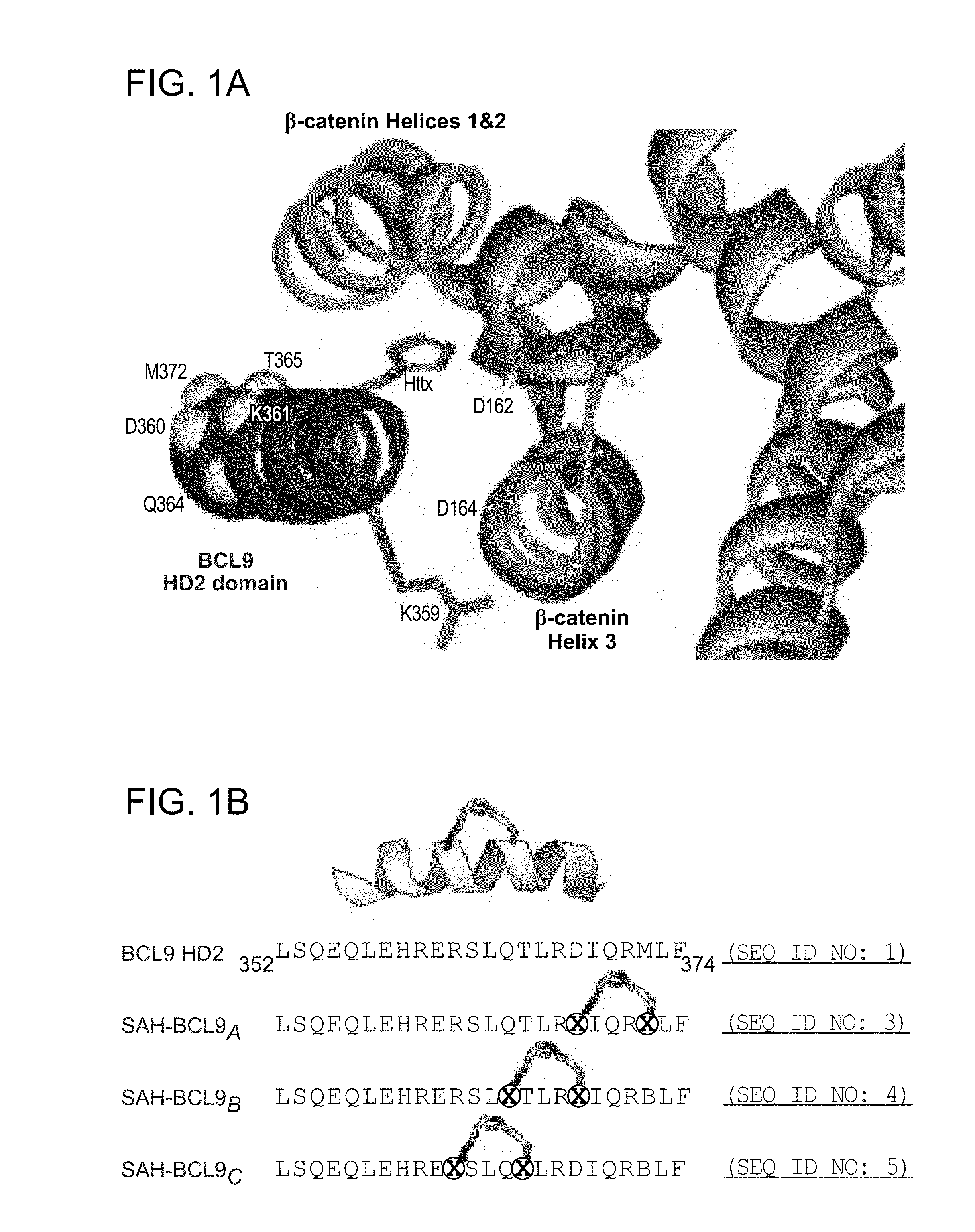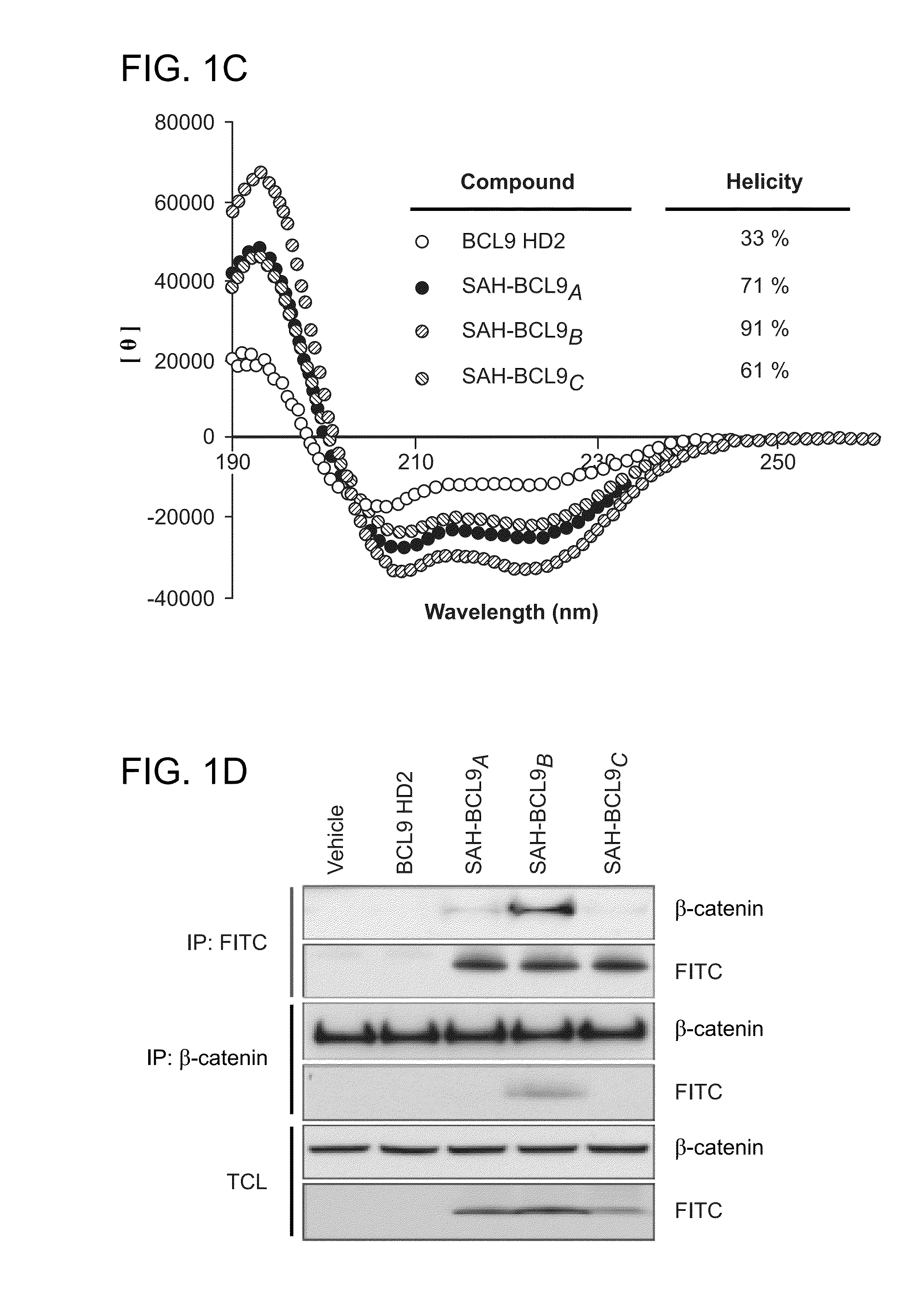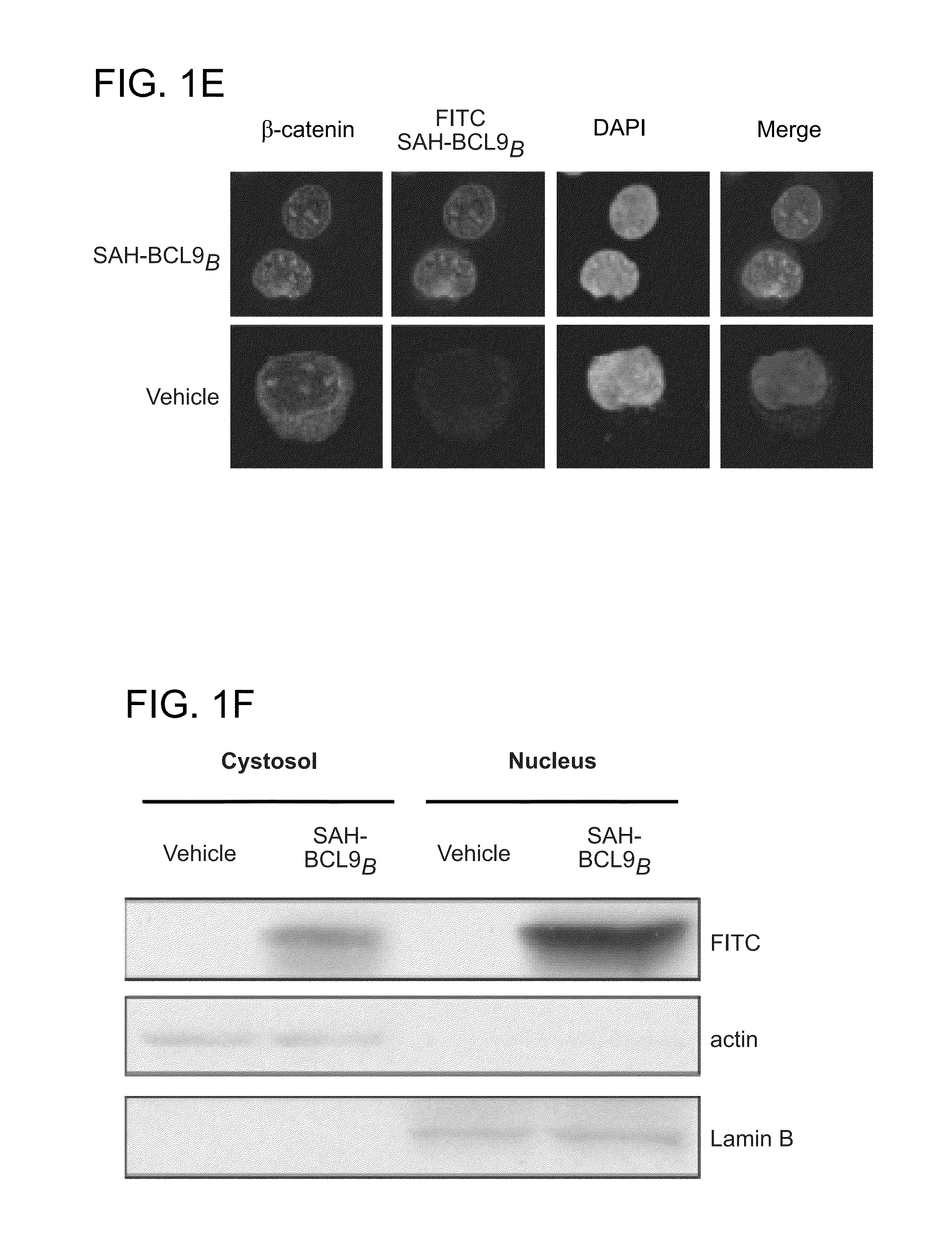Targeting deregulated wnt signaling in cancer using stabilized alpha-helices of bcl-9
- Summary
- Abstract
- Description
- Claims
- Application Information
AI Technical Summary
Benefits of technology
Problems solved by technology
Method used
Image
Examples
example 1
Peptide Synthesis and Circular Dichroism
[0230]To generate stabilized alpha-helices of the BCL9 HD2 domain, which directly interacts with b-catenin (FIG. 16), syntheses of hydrocarbon stapled peptides (FIGS. 14, 15) were performed as previously described (Walensky, L. D. et al. Science 305, 1466-70 (2004); Bird, G. H., et al., Methods Enzymol 446, 369-86 (2008); Bird et al. PNAS 107, 14093-8, (2010)). Peptides were produced on an Apex 396 (Aapptec) automated peptide synthesizer using Rink amide AM LL resin (EMD Biosciences, 0.2 mmol / g resin), at 50 mmol scale. The standard Fmoc protocol employed 2×10 min deprotections in 20% piperidine / NMP followed by a pair of consecutive methanol and dimethylformamide (DMF) washes. The incorporated non-natural amino acids were treated with 4×10 min incubations in 20% piperidine / NMP to achieve complete deprotection. Amino acid coupling was performed using 0.4 M stock solutions of Fmoc-protected amino acids, 0.67 M 2-(6-chloro-1H-benzotriazole-1-yl)-...
example 2
Protein Production and Purification
[0231]Recombinant human BCL9 (214-493) was cloned into pET-23a (+) was cloned into pET-23a (+) vector (Novagen) containing carboxy-terminal hexa-histidine tag. E. coli BL21 (DE3) competent cells (Stratagene) were transformed, incubated at 37° C. until A600=0.6 was reached and then induced with 1 mM isopropyl-β-D-thiogalactoside (IPTG) for 3 h. Cells were harvested by centrifugation and lysed by sonication in 50 mM Na2HPO4, pH 8.0, 0.3M NaCl buffer. The lysates were then centrifuged and loaded onto HIS-Select Nickel Affinity Gel (Sigma) and washed with wash buffer (50 mM NaH2PO4, pH 8.0, 0.3M NaCl and 10 mM imidazole). The protein was eluted in 50 mM Na2HPO4, pH 8.0, 0.3M NaCl and 250 mM imidazole and dialyzed overnight in sterile 1×PBS. Human β-catenin constructs (e.g., residues 1-781, 138-683, 273-684) were cloned into pGEX4T1 / pGEX4T2, pET-28a, and pET-23a respectively. His-tagged fusion proteins were generated as described above for BCL9. For GST...
example 3
GST Pull-Down Assays
[0232]Equal amounts (0.5 μM) of His-tagged BCL9 and GST-tagged β-catenin bound to glutathione-Sepharose 4B beads (GE) were incubated with or without increasing amounts of HD2 or SAH-BCL9 peptides for 1 h at 4° C. in a final volume of 1000 μl PBS. Protein complexes were pelleted by centrifugation at 2000 rpm for 2 min and beads washed four times with PBS buffer. The beads were then taken up in SDS-PAGE loading buffer, boiled, and SDS-PAGE performed to visualize bound proteins by Coomassie staining.
PUM
| Property | Measurement | Unit |
|---|---|---|
| Fraction | aaaaa | aaaaa |
| Fraction | aaaaa | aaaaa |
| Fraction | aaaaa | aaaaa |
Abstract
Description
Claims
Application Information
 Login to View More
Login to View More - R&D
- Intellectual Property
- Life Sciences
- Materials
- Tech Scout
- Unparalleled Data Quality
- Higher Quality Content
- 60% Fewer Hallucinations
Browse by: Latest US Patents, China's latest patents, Technical Efficacy Thesaurus, Application Domain, Technology Topic, Popular Technical Reports.
© 2025 PatSnap. All rights reserved.Legal|Privacy policy|Modern Slavery Act Transparency Statement|Sitemap|About US| Contact US: help@patsnap.com



